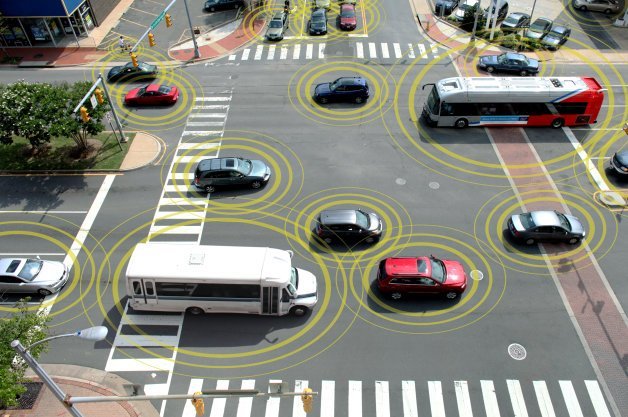Called vehicle-to-vehicle communication (V2V), the technology would use radio frequencies to communicate potential dangers to drivers, and the Transportation Department has begun the rule-making process of possibly making it required equipment in cars, though it could take years for a new law to take effect.
National Highway Traffic Safety Administration pointed to two potential features that would use vehicle communication to improve safety: a left-turn assist and a system that detects movements in intersections, which could prevent as many as 592,000 crashes annually and possibly save 1,083 lives.
"By warning drivers of imminent danger, V2V technology has the potential to dramatically improve highway safety," said NHTSA Deputy Administrator David Friedman said in a statement.
NHTSA also said vehicle communication could be used to assist in blind-spot detection, forward-collision alarms and warnings not to pass, though many of these technologies are available in today's cars using other technologies, like radar.
Mindful of recent "hacking" incidents involving major retailers, websites and identity theft, NHTSA said the data transmitted would only be used for safety purposes, and notes the systems being considered would contain "several layers" of security and privacy protection.
The agency also said the potential law would not add to automakers' liability, as the new technology would help drivers make better decisions, rather than take control away from them.
NHTSA calculated the added technology and equipment could add as much as $350 to the cost of a new car in 2020, including $18 for fuel costs and $13 for communications ability. The agency projects costs could drop to as low as $209 by 2058 as the technology becomes more widely used and accepted.
NHTSA's announcement spurred a positive reaction from the industry, though lobbying groups cautioned that certain airwaves should remain reserved for vehicle-to-vehicle communication in the early stages. The Federal Communications Commission has considered opening up the frequency for other purposes.
"The release by NHTSA of its proposed rule on vehicle-to-vehicle and vehicle-to-infrastructure communications technology holds the promise of being one of the most significant advances in driving safety in this generation," the Alliance of Automobile Manufacturers said in statement.
"...We continue to urge the FCC not to compromise the use of the spectrum until it is definitively established that sharing will not interfere with the safety of the driving public."
Though they've received increased attention recently, connected vehicles are not new, and car companies have been working together and separately for years to advance the technology. The University of Michigan Transportation Research Institute completed a pilot program involving 3,000 connected vehicles. During the 15-month test, more than 12 million safety messages were sent, and 60,000 interactions between the vehicles were recorded. Future projects could see up to 20,000 connected cars being tested across Michigan.
Vehicle-to-vehicle communication is one element of efforts by regulators, automakers and safety advocates to reduce accidents, which have fallen from 52,627 fatalities in 1970 to 32,479 fatalities in 2011, NHTSA says. Companies are also looking at vehicle-to-grid communication, which would allow cars to communicate with the roads and infrastructure around them.
There's also autonomous driving, which is being used on the road in mild forms in features like adaptive cruise control and automatic braking in some high-end cars today. Not part of the potential law, some autonomous (the Translogic episode below features both technologies) vehicles – like those being developed by Google – would allow cars to run without driver interaction.
Nouvelles connexes



